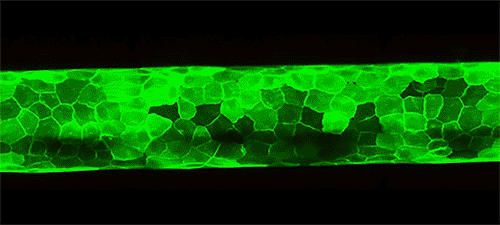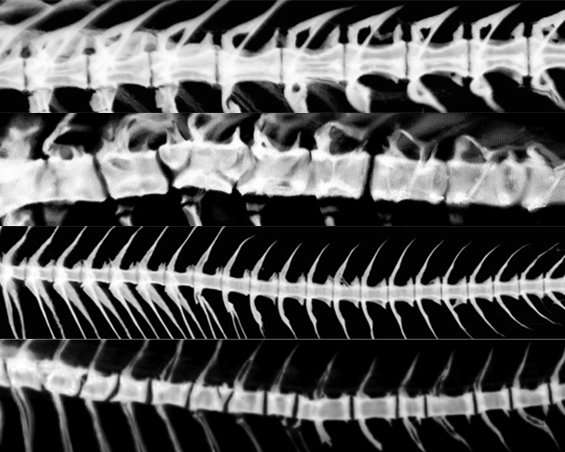How a zebrafish's squiggly cartilage transforms into a strong spine

In the womb, our strong spines start as nothing more than a rope of rubbery tissue. As our bodies develop, this flexible cord, called the notochord, morphs into a column of bone and cartilage sturdy enough to hold up our heavy upper bodies.
Graduate student Susan Wopat and her colleagues in Michel Bagnat's lab at Duke are studying the notochords of the humble zebrafish to learn how this cartilage-like rope grows into a mature spine.
In a new paper, they detail the cellular messaging that directs this transformation.
It all comes down to Notch receptors on the notochord surface, they found. Notch receptors are a special type of protein that sits astride cell membranes. When two cells touch, these Notch receptors link up, forming channels that allow messages to rapidly travel between large groups of cells.
Notch receptors divide the outer notochord cells into two alternating groups – one group is told to grow into bone, while the other is told to grow into cartilage. Over time, bone starts to form on the surface of the notochord and works its way inward, eventually forming mature vertebrae.
When the team tinkered with the Notch signaling on the surface cells, they found that the spinal vertebrae came out deformed – too big, too small, or the wrong shape.
"These results demonstrate that the notochord plays a critical role in guiding spine development," Wopat said. "Further investigation into these findings may help us better understand the origin of spinal defects in humans."

More information: Susan Wopat et al. Spine Patterning Is Guided by Segmentation of the Notochord Sheath, Cell Reports (2018). DOI: 10.1016/j.celrep.2018.01.084
Journal information: Cell Reports
Provided by Duke University




















